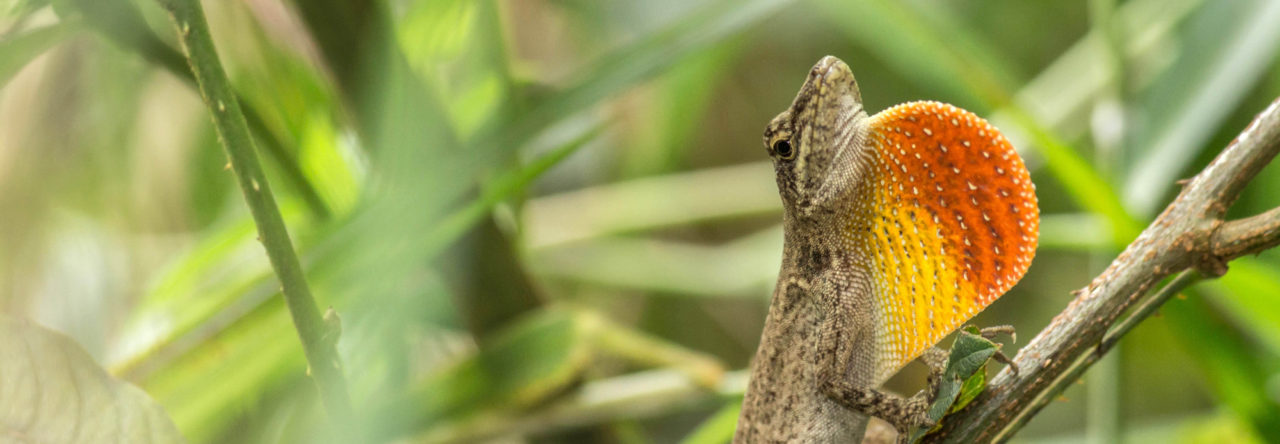In contrast to their ubiquity at the evolution meetings [1,2], anoles are barely in attendance at the enormous Ecological Society of America meetings. Last year there were but three (including the famous “Kitty Cam” talk), and this year the dearth is worse, with but a single talk this week in Minneapolis. So, here it is, by Rich Glor and part of the symposium on “Coexistence of Closest Relatives: Synthesis of Ecological and Evolutionary Perspectives”:
Patterns of Anolis lizard coexistence across a complex island landscape
Thursday, August 8, 2013: 3:40 PM
M100EF, Minneapolis Convention Center
Richard E. Glor , Biology, University of Rochester, Rochester, NY
Background/Question/Methods
In species rich adaptive radiations, complex patterns of species coexistence result from speciation and natural selection acting over evolutionary time. In Anolis lizards, similar communities of 4-6 arboreal microhabitat specialists that partition available perches by size and height have evolved independently on each of the four largest Caribbean islands. These well-studied communities of anole ‘ecomorphs,’ however, account for only a fraction of anole species diversity. Most anole diversification has occurred subsequent to microhabitat specialization, resulting in complexes of closely-related species that belong to the same ecomorph but appear to be allopatrically or parapatrically distributed in different macrohabitats. We use integrative analyses that combine thousands of anole species occurrence records from public biodiversity databases, GIS environmental data, molecular phylogenetic and population genetic data, and data on phenotypic variation to test three predictions about anole species co-occurrence across the island of Hispaniola: (1) local communities tend to be comprised of microhabitat specialists that evolve relatively early in anole radiations, (2) closely-related or incipient species tend to be allopatrically or parapatrically distributed in distinct macrohabitats, and (3) habitat filtering in extreme habitats leads to communities in which species that are more closely related to one another than expected by chance.
Results/Conclusions
Our analyses support the prediction that local communities tend to be comprised of phenotypically distinct microhabitat specialists that evolved early in anole radiations and are relatively distantly related. Our analyses also support the prediction that closely-related species tend to be allopatrically or parapatrically distributed in distinct macrohabitats. This result, together with a growing body of molecular population genetic data, suggests that both geographic and ecological processes play an important role in recent anole speciation events, and dictate patterns of co-occurrence in closely related anole species. Finally, we find preliminary support for the importance of habitat filtering by recovering evidence for a latitudinal gradient in the phylogenetic composition of local communities whereby communities at the highest altitudes tend to include more closely-related species than communities at lower altitudes. This pattern is particularly evident in the Cordillera Central, where communities of closely related and ecologically unusual species tend to occur at the highest altitudes.
- Evolution in Real Time on Lizard Island - March 23, 2025
- Spider Snags Adult Anolis osa - March 22, 2025
- An Homage to the Green Anoles of New Orleans - March 21, 2025


Amber Wright
Jonah Piovia-Scott presented on anoles and marine subsidies (Piovia-Scott et al. 2013, Oecologia, blogged previously on AnoleAnnals). He just didn’t have Anolis in the title.
Jonathan Losos
That’ll teach him!